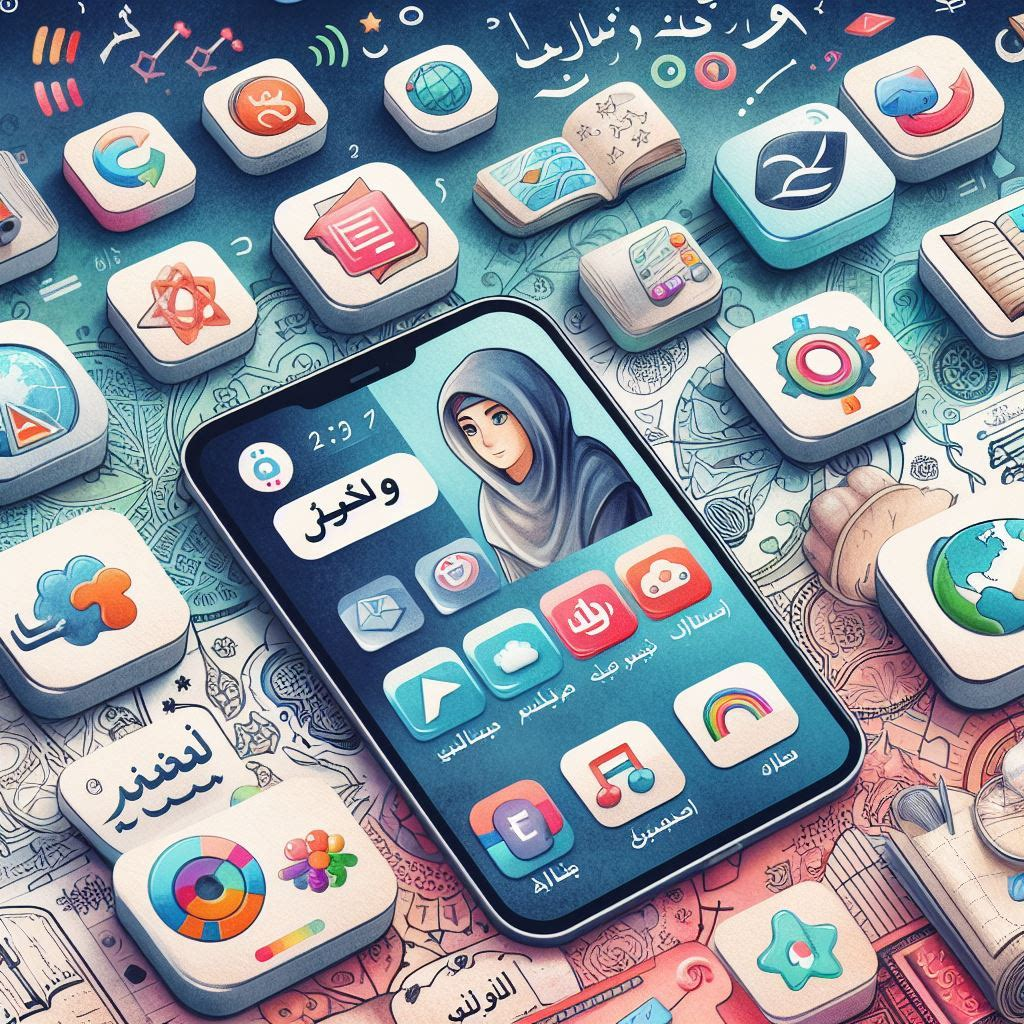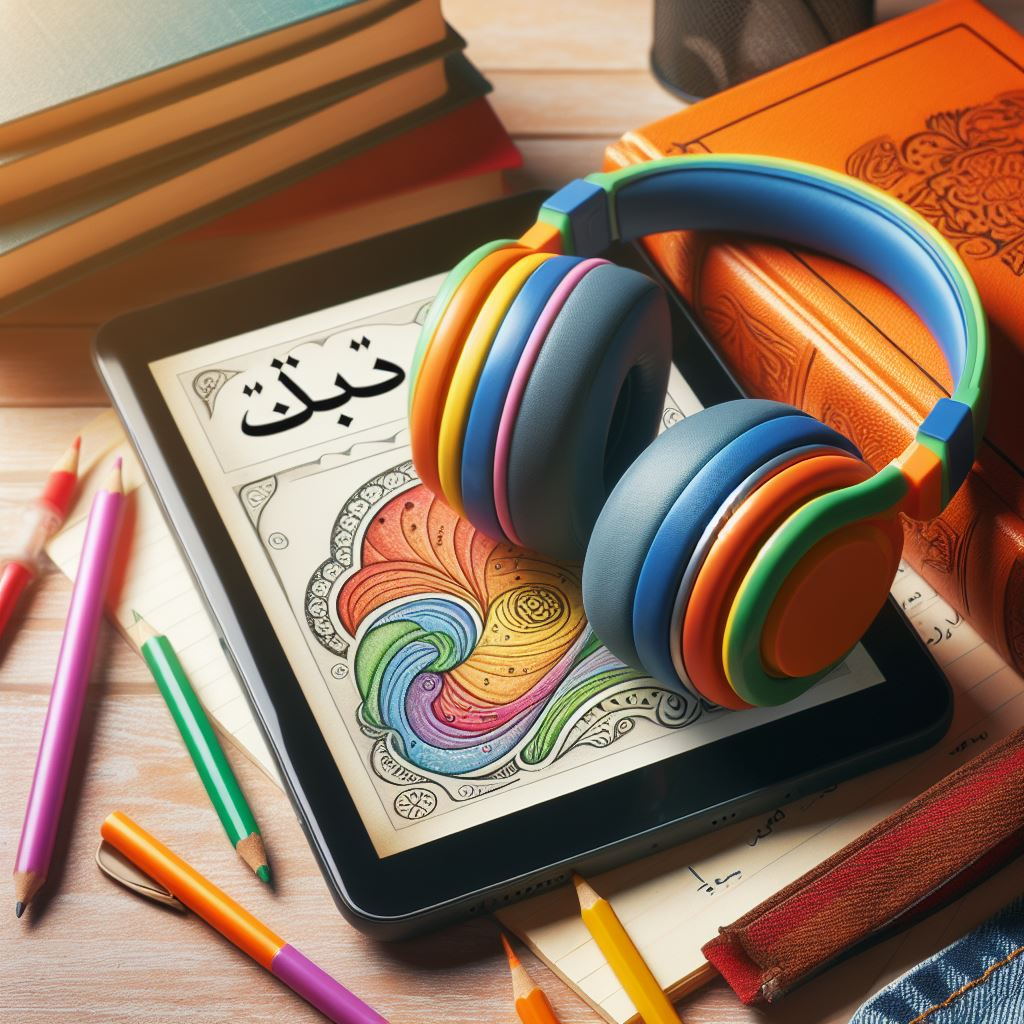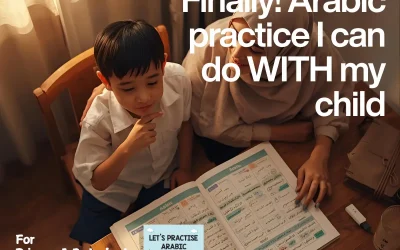As parents of primary Madrasah students in Singapore, you understand the importance of providing your children with a strong foundation in Arabic. The Madrasah curriculum focuses on various aspects of Arabic language learning, such as reading, writing, speaking, and comprehension. However, juggling work, household responsibilities, and extracurricular activities can make it challenging to dedicate enough time to support your child’s Arabic language education. That’s where accessible and engaging Arabic learning resources can be a game-changer, allowing you to maximize your child’s progress even with a busy schedule. These resources can complement the Madrasah curriculum by providing additional practice, reinforcement, and exposure to the Arabic language.
In this blog post, we’ll explore a variety of Arabic learning resources tailored for busy parents, ranging from educational apps and online platforms to multimedia materials and creative activities. By effectively leveraging these tools, you can reinforce classroom lessons, foster a love for the language, and ensure your child continues to make steady progress in their Arabic language acquisition journey. Don’t just take our word for it-look at the testimonials from other parents who have successfully used these resources to support their child’s Arabic learning.

Educational Apps and Online Platforms
In today’s digital age, mobile apps and online platforms offer convenient and interactive ways to learn Arabic. These resources can be accessed anytime, anywhere, making them ideal for busy parents who want to incorporate Arabic learning into their child’s daily routine. For instance, you could encourage your child to use an Arabic alphabet app during their commute to school or play an Arabic vocabulary game during dinner preparation.
1. Arabic Alphabet Apps:
Start with apps that focus on teaching the Arabic alphabet and letter recognition. Look for apps that use gamification, animations, and engaging activities to make learning fun and engaging for young learners. Some popular options include “Arabic Alphabet for Kids,” “Arabic Alphabet Tracing,” and “Arabic Alphabet Writing.”
2. Vocabulary Building Apps:
Once your child has a solid grasp of the Arabic alphabet, move on to vocabulary-building apps. These apps often feature flashcards, matching games, and interactive quizzes to help children learn and retain new words related to various themes, such as colors, numbers, animals, and everyday objects. “Arabic for Kids,” “Learn Arabic Vocabulary,” and “Arabic Word Game” are excellent choices.
3. Online Learning Platforms:
Besides apps, online learning platforms can provide a comprehensive Arabic learning experience. These platforms often offer structured lessons, interactive exercises, progress tracking, and even virtual tutoring or instructor feedback. Some popular options include ‘ArabicPod101,’ ‘Arabic Reading,’ and ‘Arabic for Kids by Little Thinkers.’ However, it’s important to note that online resources should be used under parental supervision to ensure the safety and appropriate use of these platforms.
4. Educational Websites:
Reputable educational websites can also be a valuable resource for Arabic learning materials. Look for websites that offer printable worksheets, coloring pages, puzzles, and other engaging activities. The “Arabic Playground” and “Arabic for Kids” websites are great starting points.

Multimedia Materials
Incorporating multimedia materials into your child’s Arabic learning routine can cater to different learning styles and make the process more engaging and enjoyable.
1. Arabic Audiobooks and Podcasts:
Audiobooks and podcasts can help develop your child’s listening comprehension skills while exposing them to authentic Arabic pronunciation and intonation. Look for audiobooks that narrate simple stories or folktales in Arabic or podcasts that teach Arabic vocabulary and phrases through songs or dialogues.
2. Educational Videos and Cartoons:
Visual learners may benefit significantly from educational videos and cartoons that teach Arabic concepts through animations, characters, and storytelling. YouTube channels like “Learn Arabic with Zaky” and “Arabic for Kids” offer a wide range of engaging videos covering various topics, from the Arabic alphabet to grammar lessons and cultural lessons.
3. Arabic Music and Rhymes:
Incorporating Arabic music and rhymes into your child’s learning routine can make the language more enjoyable and easier to remember. Look for children’s songs with catchy melodies and repetitive lyrics that teach Arabic vocabulary, numbers, or grammatical concepts.

Creative Activities and Games
Hands-on activities and games can reinforce Arabic learning while allowing your child to have fun and explore creativity.
1. Arabic Alphabet Crafts:
Create crafts that help your child practice recognizing and forming Arabic letters. For example, you could make alphabet magnets using foam letters or create letter-shaped puppets or figurines out of clay or playdough.
2. Arabic Vocabulary Games:
Turn vocabulary practice into a game by creating flashcard matching games, bingo games with Arabic words, or scavenger hunts where your child has to find items around the house and identify them in Arabic.
3. Arabic Storytelling:
Encourage your child to create their own stories or comic strips using Arabic words and phrases they’ve learned. This activity not only reinforces vocabulary but also promotes creativity and self-expression.
4. Arabic Language-Themed Coloring and Sticker Books:
Coloring and sticker books featuring Arabic characters, words, or scenes can make learning the language more engaging and enjoyable for young learners.

Tips for Effectively Using Learning Resources
While accessing various Arabic learning resources is important, effectively utilizing them is crucial for maximizing your child’s progress. Here are some tips to keep in mind:
1. Establish a Routine:
Set aside dedicated time each day or week for Arabic learning activities, whether using an app, watching an educational video, or engaging in a hands-on activity. Consistency and repetition are crucial to reinforcing what your child learns in Madrasah.
2. Make it Fun and Interactive:
Children learn best when engaged and having fun. Use resources incorporating games, songs, stories, and interactive elements to keep your child interested and motivated.
3. Involve Your Child:
Your active involvement in your child’s Arabic learning journey is crucial. Get your child’s input when selecting learning resources or activities. They’ll be more invested in the process if they feel their interests and preferences are considered. You can also join in on the learning activities, such as playing an Arabic vocabulary game together or listening to an Arabic audiobook during bedtime.
4. Provide Encouragement and Positive Reinforcement:
Celebrate your child’s progress and achievements, no matter how small. Positive reinforcement can boost their confidence and motivation to continue learning Arabic.
5. Seek Guidance from Teachers:
If you need help deciding which resources or activities to use, feel free to ask your child’s Arabic teacher for recommendations.
By incorporating a variety of Arabic learning resources into your child’s routine and effectively utilizing them, you can provide valuable support and reinforcement for their Arabic language education. Remember, consistency, engagement, and a positive learning environment are key to maximizing your child’s progress and fostering a lifelong love for the Arabic language. Now that you have a comprehensive list of resources and tips, it’s time to take action. Start by selecting a few resources that align with your child’s learning style and interests, and incorporate them into your daily routine. With your support and these resources, your child’s Arabic language skills will continue to grow and flourish.





